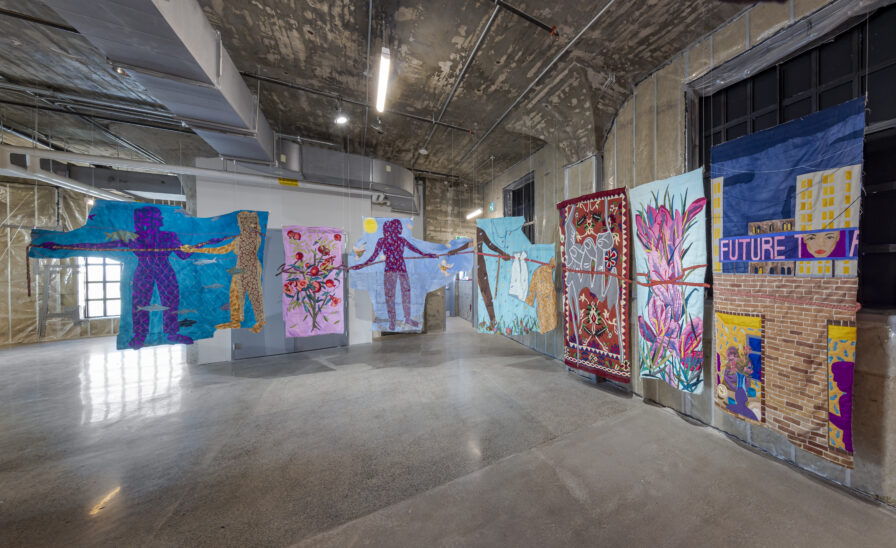September 21 – December 1, 2024
The Auto BLDG, 9th Floor
The Other Home (2024) is a large-scale textile installation that examines ideas of exile and migration. The artwork, composed of various vertical panels, addresses a range of emotions associated with homelessness and the process of developing new social ties and forms of belonging. By using fabric from different parts of the Middle East and South and Central Asia, she recomposes her own affective landscape and reflects the collective struggle to find a sense of home in ourselves and in the world.
Hangama Amiri’s work is shaped by personal memories and her diasporic experience. In 1996, when Hangama was seven years old, her family fled Kabul, Afghanistan, and became refugees for almost a decade. Her practice, in part, amplifies the collective struggles for women’s rights in Afghanistan and other parts of the world. Stories of her homeland are thus present in her choice of materials, usually sourced from Afghan-owned shops in New York, which she uses to create textile collages by layering and pinning pieces of fabric and then sewing them together.
Commissioned by the Toronto Biennial of Art and made possible with the generous support of the Women Leading Initiative.
Bio

Artist Bio
Hangama Amiri
Hangama Amiri (1989; she/her) holds an MFA from Yale University where she graduated in 2020 from the Painting and Printmaking Department. She received her BFA from NSCAD University in Halifax, Nova Scotia, and is a Canadian Fulbright and Post-Graduate Fellow at Yale University School of Art and Sciences (2015-2016). Her recent exhibitions include Quiet Resistance (2023) at Moenchehaus Museum Goslar, Germany; Rumi (2023) at Aga Khan Museum, Toronto, ON; A Homage to Home (2023) at The Aldrich Contemporary Art Museum, Ridgefield, CT and Kemper Museum of Contemporary Art, Kansas City, MO; Sharjah Biennial 15: Thinking Historically in the Present (2023), Sharjah, UAE; Reminiscences (2022) at Union Pacific in London; Henna Night/ Shabe Kheena (2022) at David B. Smith Gallery, Denver, CO.
Amiri works predominantly in textiles to examine notions of home, as well as how gender, social norms, and larger geopolitical conflict impact the daily lives of women, both in Afghanistan and in the diaspora. Continuing to use textiles as the medium, Amiri searches to define, explore, and question these spaces. The figurative tendency in her work is due to her interest in the power of representation, especially of those objects that are ordinary to our everyday life, such as a passport, a vase, or celebrity postcards.
Exhibition Site

The Auto BLDG, 9th Floor
158 Sterling Road, 9th Floor
Toronto ON
M6R 2B7



